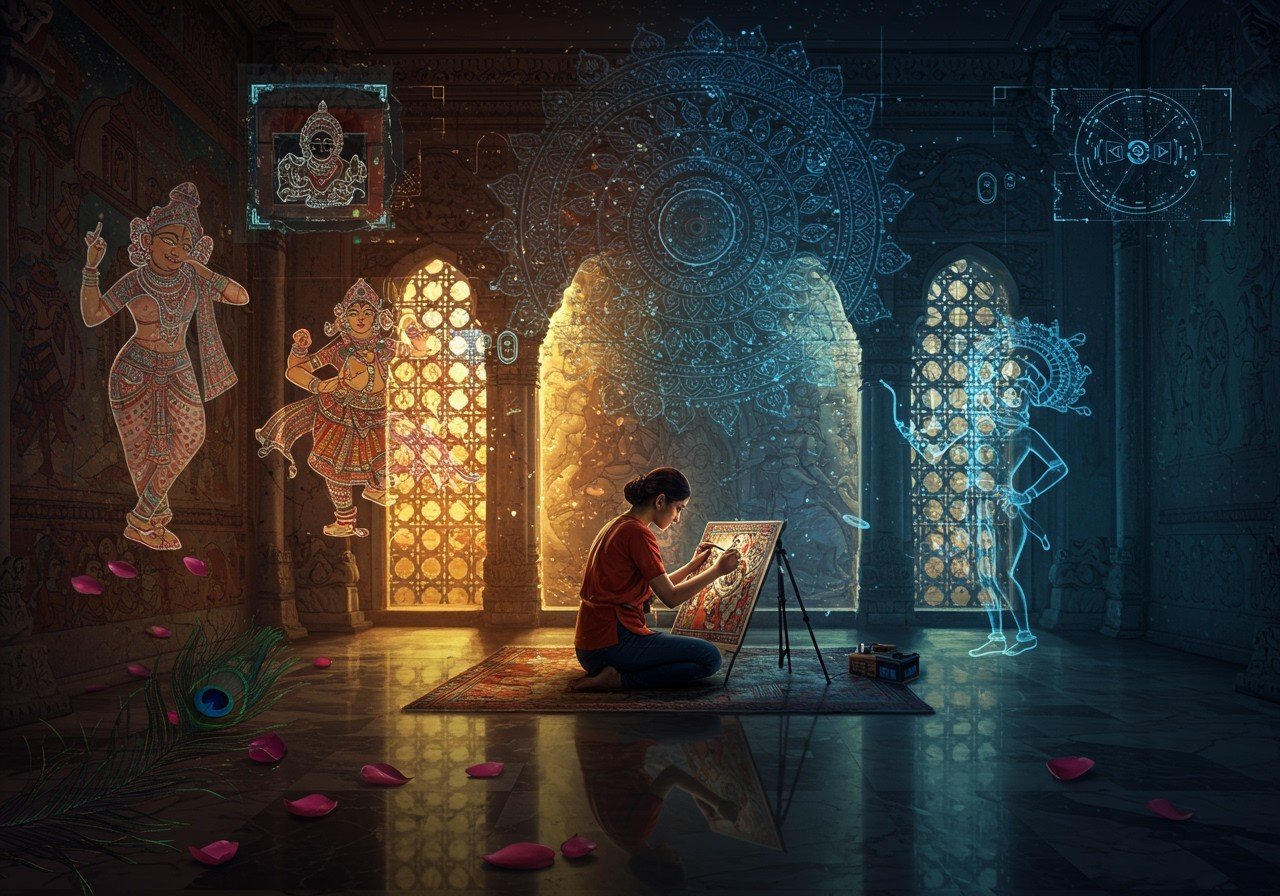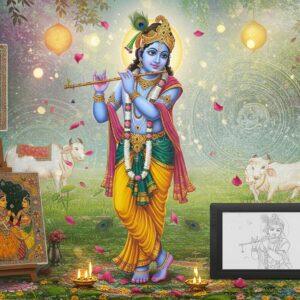
India’s artistic heritage, spanning millennia, is a vibrant tapestry of traditions. Safeguarding this legacy is vital for upholding cultural identity and enriching future generations. This article delves into the hurdles faced in preserving India’s artistic heritage and proposes viable solutions. We’ll explore the significance of Indian art and culture, the contributions of art historians, and the role of education in preservation.
Understanding Indian Art and Culture
Indian art encompasses diverse forms, including classical music, dance, sculpture, painting, and textiles. Traditional crafts, with regional variations, contribute significantly to India’s artistic landscape. Educational resources, such as the ‘Indian art and culture NCERT’ books, play a crucial role in educating younger generations about this rich heritage.
Notable art forms include:
- Madhubani paintings from Bihar: These vibrant paintings, traditionally done on freshly plastered mud walls, depict mythological scenes and social events. They are now also done on cloth, canvas, and handmade paper.
- Warli paintings from Maharashtra: These tribal paintings, characterized by their simple stick figures and geometric patterns, depict scenes of daily life and nature. They reflect the close connection between the Warli tribe and their environment.
- Tanjore paintings from Tamil Nadu: Known for their rich colors, gold leaf, and embedded precious stones, these classical South Indian paintings often depict deities and scenes from Hindu mythology. They are a testament to the region’s artistic skill and devotion.
Religion, mythology, and historical events have profoundly shaped Indian artistic expressions over centuries. These influences are reflected in various art forms, from ancient temple sculptures to miniature paintings and traditional performing arts.
Challenges in Preserving India’s Artistic Heritage
Preserving India’s art heritage faces numerous obstacles:
- Modernization and urbanization: The rapid pace of development often comes at the cost of traditional art forms, as artisans struggle to compete with mass-produced goods and find it difficult to maintain traditional practices.
- Inadequate funding: Limited financial resources hinder conservation efforts, affecting the restoration of historical sites and the support provided to traditional artisans.
- Lack of awareness: A disconnect between younger generations and traditional art forms poses a threat to their continuity. This is compounded by the appeal of modernity and mass-produced goods.
- Climate change: Changing weather patterns and environmental degradation pose a significant risk to physical artifacts, including ancient monuments, sculptures, and paintings.
- Commercial exploitation: The increasing commercialization of art can lead to the production of inauthentic replicas, undermining the value and integrity of traditional art forms.
- Illegal art trafficking: The illicit trade of cultural artifacts deprives India of its heritage. This illegal activity contributes to the loss of invaluable art pieces and weakens cultural identity.
- Bureaucratic hurdles: Complex regulations and uncoordinated efforts between different government bodies can slow down preservation initiatives.
Role of Indian Art Historians
Art historians play a crucial role in documenting, researching, and preserving India’s artistic heritage. Their work helps understand the evolution of art forms, authenticate artworks, and educate the public. Collaboration between historians, conservators, and government bodies is essential for effective preservation.
Education and Awareness
Educational institutions can promote art preservation by integrating art and culture studies into their curriculums. Workshops, seminars, and exhibitions can raise awareness. Digital platforms can make art accessible to a wider audience, fostering appreciation and understanding.
Government and Policy Interventions
Government support through funding, grants, and policy interventions is crucial. Successful initiatives and schemes have demonstrated the positive impact of government involvement in preserving heritage. A cohesive national strategy, along with international collaborations, is essential.
Technological Solutions for Art Preservation
Technology offers valuable tools for art preservation:
- Digital archiving: Creating digital records of artworks ensures their preservation even if the physical originals are damaged or lost. This technology allows for wider access to art and facilitates research.
- 3D scanning and printing: These technologies assist in the restoration of damaged artifacts and the creation of replicas for educational purposes. They also enable the study of artifacts in detail without handling the originals.
Virtual museums and databases further enhance accessibility and management of art assets. These technological advancements are instrumental in safeguarding India’s rich artistic heritage for future generations.
Poojn.in’s Contribution to Preserving Indian Heritage
Poojn.in, India’s leading online store for cultural goods and services, plays a vital role in preserving and promoting India’s artistic heritage. By offering a wide selection of authentic products, poojn.in supports local artisans and traditional craftspeople. This platform connects modern consumers with the rich tapestry of Indian art and culture, ensuring the continuity of these traditions.
Explore our collection of authentic products that embody India’s rich cultural heritage:
- Tulsi Kanthi Mala: This sacred necklace, made from Tulsi wood, is a symbol of devotion and spiritual practice. It connects wearers to a rich tradition of Hindu spirituality.
- Sandalwood Incense Sticks: These fragrant incense sticks, made from pure sandalwood, create a serene atmosphere for prayer and meditation. They represent the importance of fragrance in Indian rituals and traditions.
Conclusion: A Collective Responsibility
Preserving India’s artistic heritage is a shared responsibility. By appreciating, supporting, and educating ourselves and others about traditional art forms, we can contribute to the continuity of our cultural legacy. Embracing technological advancements and supporting platforms like poojn.in are vital steps in safeguarding these treasures for future generations.


